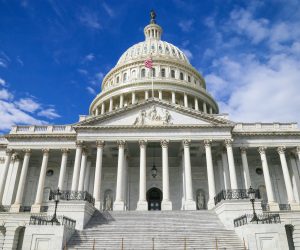The word tumultuous comes to mind when considering the U.S. government’s IT networking year in review. It’s hard to retroactively scrutinize the decision making of any organization as woefully unprepared for the stresses brought on by the pandemic as many international administrations.
Though organizations and governments are significantly less fear-struck as time marches on, persistent COVID concerns combined with the threat of variants are enough to influence the first provisions to be directly reactive to the shortcomings the pandemic has exposed. The influx of around 108 million unemployment claims between March 2020 and March 2021, compared to 5.1 million from the same period a year previous, caused data spikes previously unseen by the legacy systems in use by the Department of Labor. With continuing surges in unemployment, pandemic relief needs, and remote work, federal agencies might turn to cloud-based network solutions like SD-WAN. Flexible scaling is also necessary for a unified communications-as-a-service (UCaaS) approach to handling inflated remote work metrics.
Network strength and stability are a starting point for improvement, and agencies shouldn’t shrug off the expertise of Wi-Fi-as-a-service managers. With each federal organization having plenty of other irons in the fire, outsourcing maintenance and facilitation into capable hands is the savviest delegation of responsibility. Beside the desired revitalization of existing network models, or the introduction of new ones, contracting management of resources as-a-service allows agencies to treat more prescient matters as a focal point.
One of the red flags is undoubtedly security. Recent high-profile data breaches, such as the SolarWinds and Hafnium incidents, that have been attributed to malicious foreign actors don’t exactly inspire confidence in current network protection measures. Rumblings of the Biden administration’s course of action indicate the cyber gap will be narrowing. The process surely begins with examining the vulnerabilities of IoT device interoperability and establishing zero-trust policies. Uniform cyber hygiene practices should come easily to systems equipped with advanced security models in the vein of SASE (security access service edge) and vetted through the Continuous Diagnostics and Mitigation program. The vulnerabilities of off-site Wi-Fi can be allayed by private network use and alternatives; otherwise, managed Wi-Fi adoption will suffice.
Radio access networking technology is coming to the fore for mobile network operators looking to avoid overreliance on single vendor channels. The federal Open RAN Policy Coalition will drive policy making to showcase this emerging trend. In addition, the government is taking a hard look at 5G capability as a power to be harnessed for future large-scale deployments. President Biden’s American Jobs Plan is said to have designs on widespread broadband connectivity that will germinate innovation in rural areas and bring competition to monolithic sectors.

























